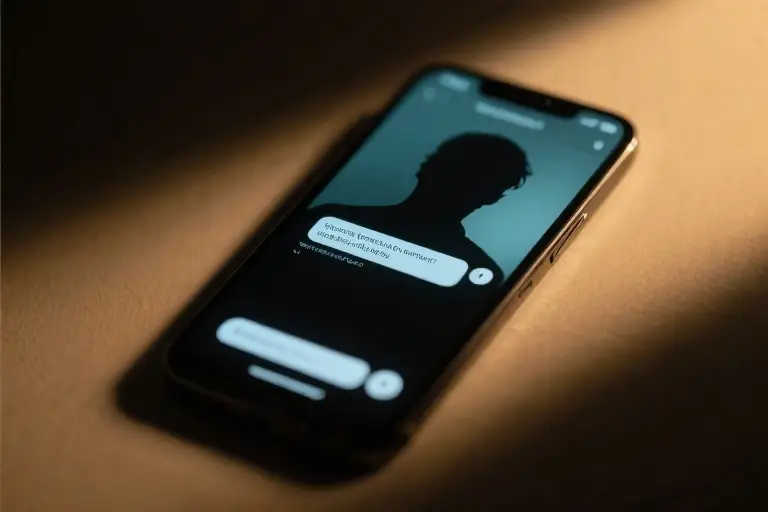The clock glows 3:07 AM as your finger hovers over the delete key. That Bali trip you’ve dreamed about since college – the one with the sunrise yoga sessions and volcanic hikes – disappears pixel by pixel from your spreadsheet. This marks the seventh personal plan you’ve erased this month to accommodate his conference schedule, her family reunion, their couple’s therapy appointments. You tell yourself this is what growth looks like in relationships – the noble art of compromise. But why does your chest tighten each time you sacrifice another fragment of your imagined future?
“Love shouldn’t be a one-sided terrain adaptation,” my therapist said during our last session, her words slicing through my carefully constructed justifications. “When you’re always the one bending, who’s left to map your emotional topography?” The question lingered like morning fog, revealing silhouettes of forgotten selves buried beneath years of relational concessions.
That silent 3 AM moment contains multitudes. The way you bite your lip when canceling pottery class (again). How you’ve stopped suggesting restaurants because “he prefers home cooking.” The gradual shrinking of your Spotify playlists from eclectic mixes to his workout tracks. These micro-erasures accumulate like sedimentary layers, each stratum burying deeper what psychologists call your “pre-relational identity.
We rarely notice the corrosion while it’s happening. Like coastal erosion, the changes reveal themselves in dramatic moments – when friends gasp “You used to love jazz festivals!” or when your mother finds your abandoned sketchbook and asks “Why did you stop drawing?” The realization often comes too late: you haven’t been growing in this relationship. You’ve been folding yourself into increasingly smaller shapes to fit someone else’s emotional container.
This phenomenon – what researchers term “relational self-compression” – follows predictable patterns. First goes the “unshared interests” (those Friday night book club meetings). Next, the “inconvenient dreams” (your Paris bakery internship plans). Eventually, even your bodily autonomy slips away (wearing his preferred perfume, growing your hair because “long looks more feminine”). The cruelest irony? We often mistake this diminishment for maturity, this self-erasure for love’s natural progression.
Neuroscience reveals why these compromises feel simultaneously painful and rewarding. Each time we prioritize a partner’s preferences over our own, the brain’s anterior cingulate cortex registers conflict (that gut-twisting discomfort), while the ventral striatum releases pleasure chemicals (rewarding us for “being a good partner”). This creates a perverse addiction to self-betrayal – what psychologists call the “martyrdom loop.”
Your 3 AM decisions matter more than you realize. With each deleted plan, you’re not just canceling a trip – you’re reinforcing neural pathways that equate love with self-negation. The space between who you were and who you’re becoming isn’t growth; it’s the measurable distance between your authentic self and the shape you’ve contorted into for love’s sake.
So tonight, before you close that laptop, ask yourself: Which parts of me have I been slowly eroding? What forgotten terrain of my soul waits to be rediscovered? The answers might terrify you. But they also contain the first map back to yourself.
The 5 Warning Signs You’re Not Growing, Just Bending
You know that subtle shift when you stop noticing what’s missing in your relationship, and start celebrating every crumb of attention you receive? That’s the first red flag waving at you. Healthy self-growth in relationships shouldn’t feel like constantly editing your soul’s blueprint to match someone else’s architectural plans.
Signal 1: Gratitude Overrides Grievance
When your emotional scale tips heavily toward appreciating whatever scraps of affection come your way, while brushing off significant personal losses – that’s not growth, that’s emotional downsizing. Last month when you gave up your promotion to accommodate his relocation, did you feel proud of your ‘flexibility’ rather than acknowledging the career sacrifice?
Self-check: Make a two-column list:
- Left side: Things you’ve gained from this relationship in past year
- Right side: Things you’ve surrendered or compromised
If the right column entries spark more justification than sorrow, your growth compass might be malfunctioning.
Signal 2: “You’ve Changed” Becomes a Compliment
Remember when your college best friend said last Thanksgiving, “I barely recognize you anymore” and you took it as evidence of your relationship maturity? That’s like a tree being proud of growing sideways to avoid blocking someone’s view. Authentic evolution expands your essence rather than erasing your original contours.
Exercise: Dig up old photos/messages from 2+ years ago. Does that version of you feel like a distant cousin rather than your younger self? The widening gap might indicate adaptation rather than authentic development.
Signal 3: The “We” Epidemic
Track your conversations for a day. When describing hobbies, weekend plans or life goals, how often do sentences begin with “We” versus “I”? While shared identity is beautiful, complete erosion of first-person narratives suggests you’re narrating a joint biography at the expense of your individual story.
Quick test: Complete these sentences spontaneously:
- “My perfect Sunday involves…”
- “In five years, I hope to…”
If answers immediately default to couple activities without any purely personal elements, your individuality might be in hibernation.
Signal 4: The Shrinking Future
Pull up your Notes app or journal from a year ago. Compare the dreams you documented then versus now. Have your aspirations narrowed to only include what’s possible within the relationship’s current framework? Like plants that stunt their growth to fit small pots, you might be unconsciously pruning your own potential.
Growth check: Write down three wild dreams you’ve stopped entertaining since being in this relationship. Not impossible fantasies – just ideas you sidelined because they didn’t fit the “us” narrative. Their mere existence on paper often reveals uncomfortable truths.
Signal 5: The Emotional Math
Here’s the ultimate test: In moments of conflict, do you measure fairness based on equal pain (“we both suffered”) or equal growth (“we both expanded”)? Toxic relationships often maintain equilibrium through mutual damage rather than mutual development.
Journal prompt: Describe a recent disagreement. Now rewrite it from a neutral observer’s perspective, tracking what each person learned versus what each sacrificed. Growth-focused relationships leave both parties wiser, not just equally wounded.
Self-Integrity Assessment Tool
Let’s quantify these observations. Score each statement from 1 (never) to 5 (always):
- I modify my opinions to avoid disagreements
- My hobbies have shifted significantly to match my partner’s
- I feel guilty spending money/time on purely personal interests
- I’ve abandoned goals that didn’t align with our joint future
- Friends/family say I’ve become “a different person”
Scoring:
5-10: Healthy individuality
11-15: Moderate adaptation
16-20: Significant self-compromise
21-25: Emergency self-reclamation needed
These signals aren’t about blaming your relationship, but about auditing its growth trajectory. Like checking a plant’s roots, sometimes what looks like thriving above ground reveals cramped conditions beneath the surface. The good news? Unlike plants, we can repot ourselves at any time.
The Psychology Behind Self-Compression
We’ve all experienced that quiet moment of realization – staring at a half-empty notebook where your personal goals used to be, or noticing how your laughter sounds different around certain people. This isn’t accidental. There are deep psychological and cultural forces that condition us to shrink ourselves in relationships, often mistaking compression for connection.
The Sacrifice Myth Across Cultures
From childhood fairy tales to romantic blockbusters, we’re fed the dangerous narrative that love requires self-erasure. In Eastern collectivist cultures, this manifests as filial piety extending into romantic relationships – the expectation to prioritize harmony over individual needs. Meanwhile, Western individualism paradoxically creates its own version through ‘romantic completion’ myths (“you complete me”) that suggest we’re incomplete without partnership.
Neuroscience reveals how our brains reinforce this. When we please others, our reward system releases dopamine – the same chemical that reinforces addictive behaviors. This creates a neurological feedback loop where self-abandonment literally feels rewarding. Functional MRI studies show heightened activity in the ventral striatum during people-pleasing behaviors, explaining why breaking these patterns feels physically uncomfortable at first.
Cultural Programming in Action
Consider these contrasting scenarios:
- Tokyo office worker (28): “I canceled my photography exhibition because my boyfriend said it conflicted with his cousin’s wedding. Good partners should put family first.”
- London consultant (31): “I pretended to love hiking for three years until I realized I was just mirroring his personality. Who even am I?”
Both represent different cultural paths to the same destination – losing oneself in the relationship geography. The Japanese example shows vertical compression (fitting into hierarchical expectations), while the British case demonstrates horizontal absorption (dissolving personal boundaries).
The Cost of Chronic Compression
Persistent self-minimization creates measurable psychological effects:
- Cognitive Dissonance: The growing gap between your true self and performed self consumes mental energy (about 30% more cortisol production according to UCLA studies)
- Emotional Atrophy: Like unused muscles, suppressed emotions lose their nuance – you might literally forget how to articulate certain needs
- Mirror Neuron Burnout: Constant emotional mirroring exhausts the brain’s empathy networks, leading to relationship fatigue
Rewiring the Patterns
Breaking these deep-seated behaviors requires conscious rewiring:
- Dopamine Detox: Gradually replace people-pleasing rewards with self-honoring ones (e.g., feel the pride in saying “no”)
- Cultural Audit: Identify which “shoulds” come from your authentic values versus social programming
- Neurological Reparenting: Use mindfulness techniques to strengthen the anterior cingulate cortex (your brain’s boundary-setting region)
This isn’t about blaming culture or biology, but understanding their invisible influence. Like realizing you’ve been reading a map upside down, this awareness allows you to reorient toward growth that expands rather than diminishes you. The space between who you are and who you thought you should be isn’t emptiness – it’s the fertile ground where true selfhood grows.
Rebuilding Your Compressed Self: A 3-Step Restoration Guide
Growth shouldn’t feel like shrinking. Yet so many of us emerge from relationships realizing we’ve lost dimensions of ourselves – folded inward to accommodate someone else’s blueprint for love. The good news? Just as muscles remember their strength, your authentic self can be rediscovered through deliberate, compassionate action.
Step 1: Excavate Your Buried Needs (The Archaeology Method)
Before rebuilding, we must survey the emotional landscape. Grab a notebook and:
- Timeline Your Desires
- Draw three parallel lines representing your teens, twenties, and thirties
- Mark moments when you:
✦ Felt most alive (circle in blue)
✦ Compromised core needs (underline in red)
✦ Received “you’ve changed” comments (star in black)
- Decode the Patterns
- Where do red underlines cluster near blue circles? These are your sacrifice hotspots – areas where you consistently abandoned yourself. My own map revealed Wednesday night painting classes always got cancelled for his poker games.
- Resurrect One Discarded Joy
- Pick one blue-circle activity to reintroduce this month. Not as a “hobby”, but as non-negotiable soul maintenance. Start small: 15 minutes sketching while coffee brews beats waiting for “free time” that never comes.
Pro Tip: Listen for physical reactions – that flutter when remembering salsa classes isn’t nostalgia, it’s your body pointing toward vital energy sources.
Step 2: The 10% Rebellion Protocol
Like rehabilitating atrophied muscles, we rebuild selfhood through micro-resistances:
Week 1: Keep a “Compromise Tally”
- Simply notice how often you:
✓ Nod when you want to disagree
✓ Apologize for reasonable needs
✓ Research their interests (but not yours)
Week 2-3: Schedule Mini-Mutinies
- Examples from clients:
- Order the spicy dish despite their “you don’t like heat” assumption
- Wear the “unflattering” yellow dress to brunch
- Decline one favor request with “That doesn’t work for me” (no excuses)
Week 4: Audit Your Linguistic Patterns
- Replace:
“We prefer…” → “I enjoy…”
“Sorry, but…” → “I need…”
“Is that okay?” → “This is my decision.”
Client Spotlight: Emma regained her voice literally – stopped lowering her laugh pitch to match her ex’s disapproval. “Now my giggles sound like me at 12, before I learned to shrink them.”
Step 3: Carve Unshakable Territory
Physical spaces reinforce psychological boundaries:
Option A: The 15-Minute Sanctuary
- Claim a daily window where you:
✧ Silence notifications
✧ Engage in a purely self-directed activity (no “productive” excuses)
✧ Place a visible marker (special candle, particular playlist) to signal “my time”
Option B: The Grown-Up Blanket Fort
- Designate a corner with:
- Objects representing pre-relationship you (college textbooks, childhood stuffed animal)
- Inspiration for future aspirations (travel brochures, workshop flyers)
- A “no compromise allowed” rule (this space honors only your unfiltered self)
Option C: The Digital Demilitarized Zone
- Create accounts/profiles where you:
✓ Follow interests they dismissed
✓ Post without filtering for their aesthetic
✓ Use your maiden name or a childhood nickname
Remember: These aren’t selfish acts – they’re recalibration. Like resetting a dislocated joint, it hurts briefly but prevents permanent deformity. With each small reclamation, you’re not just recovering lost ground; you’re expanding into territory your shrunken self never dared explore.
The Stories of Rebirth: When Women Stop Bending
She used to arrange her husband’s ties by color gradient every Sunday night. Now she tracks leopard footprints in Botswana, her once-manicured hands caked with red clay. The transformation wasn’t instantaneous—it began with a single wildlife photography workshop she attended ‘just to humor a friend,’ where the instructor pointed out how she instinctively framed every shot to leave empty space on the left side, the exact width of a man’s silhouette.
Case Study 1: From Dinner Parties to Dusty Trails
“I thought I was being flexible,” confesses the former corporate wife (who requested anonymity), “until my therapist asked when I’d last made a decision that scared me. I realized all my ‘growth’ had been about becoming more convenient.”
Her turning point came during a safari vacation planned around her husband’s conference schedule. While he attended meetings, she found herself mesmerized by the lodge’s resident ecologist—not romantically, but by the woman’s unapologetic expertise. “She wore mud-stained boots to dinner and nobody minded. That’s when I understood: I’d been editing myself to fit someone else’s definition of ‘presentable.'”
The Unfolding:
- Started saying “I prefer…” instead of “Whatever you like” at restaurants
- Converted the formal dining room (previously used twice yearly) into a darkroom
- Took a solo research trip to Kenya during her anniversary month
“The first photo I sold was of a lioness carrying her cub—mouth gently clamped around its belly while the kitten dangled, trusting completely. My husband said it looked dangerous. I finally replied, ‘So is forgetting how to carry yourself.'”
Case Study 2: Trading Spreadsheets for Sacred Moments
Then there’s the Harvard MBA who left private equity to hold strangers’ hands as they die. Elena’s LinkedIn still lists her former title (VP of Acquisitions), but her Instagram bio reads “Professional witness to courage.” The transition began when her fiancé called off their wedding, citing her “emotional unavailability”—a phrase that haunted her until she volunteered at a hospice center.
“I was great at optimizing portfolios,” she shares over tea, “but terrible at sitting with discomfort. Then one day, a dying man asked me to describe the sunlight. Not analyze it, just… receive it. That undid me.”
The Awakening Chain:
- Realized she’d built her career on proving she didn’t “overfeel” like “typical women”
- Noticed her therapy sessions focused on relationship “performance metrics”
- Recognized her grief over the breakup wasn’t about losing him, but losing the script
Her audio diary from that time captures the shift: “Today I cried with a patient’s daughter. Not the pretty cry. Snot-faced, gasping crying. And nobody tried to fix it. That’s when I knew—this is what being unedited feels like.”
The Patterns Beneath the Stories
Both women exemplify what psychologists call post-traumatic growth, but with a crucial distinction: their transformation didn’t stem from the loss itself, but from finally hearing their own voices in the emptiness left behind. Notice the common threads:
- Physical Space as Metaphor
- The photographer reclaimed literal square footage (dining room → darkroom)
- The banker traded glass-walled offices for hospice chairs (distance → presence)
- Reclaiming Linguistic Territory
- Switching from “we” to “I” statements
- Allowing sentences to end without seeking approval
- Bodily Autonomy
- One stopped coloring her grays to “look appropriate”
- The other wears silk blouses to deathbeds because “softness isn’t unprofessional”
A recent study from UCLA confirms what these stories suggest: women who undergo major life reinventions consistently report feeling more physically present in their bodies afterward—less “watched” and more “inhabited.”
Your Turn: Where Will You Expand?
These women aren’t extraordinary. They simply reached a threshold where staying compressed became more painful than the fear of unfolding. Consider:
- What “edits” have you been making to fit someone else’s narrative?
- Where does your body feel tense when you imagine stopping those adjustments?
- If your next chapter had a title, would it be about them or you?
As the photographer told me: “Wild animals don’t apologize for taking up space. Why did I?”
The Final Turn: When Growth Means Letting Go
There comes a moment when the compass resets itself. Not with dramatic fanfare, but with quiet clarity—like dawn light revealing what the night had stretched out of shape. If these were your last ten years, what compromises would you finally release? The answers often arrive unpolished, raw with the weight of postponed truths.
The Unlearning
We spend years mastering the art of accommodation—rounding edges to prevent collisions, softening voices to avoid echoes. But growth disguised as shrinkage leaves telltale signs:
- That hobby abandoned because it “took too much time away from us”
- The career path adjusted to align with someone else’s geography
- The slow erosion of phrases like “I need” from your vocabulary
Neuroscience confirms what your body already knows: chronic self-compression triggers the amygdala’s threat response. The fatigue you mistake for love’s labor is often your nervous system protesting unnatural contours.
The Reclamation
Rebuilding begins with micro-rebellions:
- The 10% Resistance (Start small: reclaim one evening weekly for that abandoned pottery class)
- Boundary Archaeology (Excavate your pre-relationship journals—what made your eyes brighten before adaptation set in?)
- Space Claiming Rituals (Designate a physical zone—a corner desk, a cafe table—where only your preferences matter)
These aren’t selfish acts but survival strategies. Like trees growing toward sunlight, your psyche instinctively seeks conditions for unfiltered growth.
The Aftermath
Consider Rachel, who left her law partnership at 38 to study marine biology (“I finally admitted I’d chosen corporate to impress my father”). Or Priya, who ended a decade-long relationship and discovered her love for solo hiking (“I’d forgotten how much space my laughter takes up”). Their stories share a common thread: what initially felt like loss revealed itself as the removal of growth barriers.
Your Next Chapter
Scan the QR code below for 21 Days to Unbend—a guided journey to:
- Identify relationship-induced distortions
- Recalibrate your personal growth trajectory
- Cultivate resilience against re-compression
The tools are ready. The soil, as always, was beneath you all along. Now comes the brave part: standing upright in your own shape.





